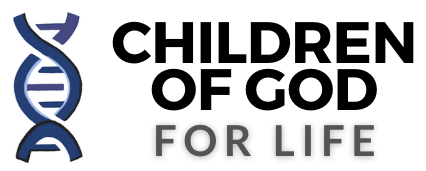Note to our readers: This is very good news that Novartis has produced their flu vaccine using non-aborted fetal cell lines. However their competitors like Sanofi Pasteur and Crucell NV are still trying to use the dangerous and unproven aborted fetal cell line PER C6. Write to thank Novartis for their consideration of the public’s moral sensibilities!
Dr Diane Rogers, Sr Director and VP Vaccine Development
Novartis Vaccines and Diagnostics
45 Sidney Street
Cambridge, MA 02139
=================================================================
http://www.historyofvaccines.org/content/blog/us-cell-line-facility-produce-pandemic-influenza-vaccine
U.S. Cell Line Facility to Produce Pandemic Influenza Vaccine
December 13, 2011by Project Staff
Influenza virion, CDC/Cynthia Goldsmith
A Novartis Vaccines and Diagnostics, Inc., manufacturing facility in North Carolina has geared up to produce pandemic influenza vaccine made from mammalian cell lines, rather than from the traditional chicken egg-based methods that have been used for more than 50 years. The plant, open since November 2009, was dedicated in a December 12 ceremony after Novartis submitted a Biological License Application for the vaccine to the U.S. Food and Drug Administration. The cell-based system and production methods are similar to those that have been licensed and used for seasonal influenza vaccine in Europe since 2007.
The facility is a public-private partnership of the U.S. Department of Health and Human Services, and Novartis of Cambridge, Mass. This partnership will be maintained under contract for at least 25 years.
Any vaccine produced by the plant and used in the U.S. will have to be approved by the FDA; specifically, a pandemic influenza vaccine would most likely be approved under a fast-track Emergency Use Authorization. The vaccine currently being produced there is an H5N1 vaccine. (H5N1, the so-called bird or avian flu, emerged as a possible pandemic threat in 1997 and resurfaced in 2003-2004, but never developed the ability to pass easily among humans.) In the event of a pandemic, the plant has the capacity to meet 25% of the U.S. demand for influenza vaccine
Since the 1940s, both seasonal and pandemic influenza vaccine antigens have been produced in chicken eggs. The virus is introduced into the allantoic fluid of the fertilized egg (this is the fluid that bathes the embryo and yolk sac), and it replicates in the membrane surrounding the fluid. After about three days, the virus-containing fluid is harvested from each egg, and the rest of the manufacturing process continues. Dependence on egg-based vaccine production is problematic, however, even with the somewhat predictable schedule of a seasonal influenza vaccine. First, eggs must be available in large quantities when vaccine production is to begin. Any disruption in egg supply – such as a disease affecting chickens, or bad weather interfering with the shipping of eggs – can mean a delay in vaccine production. Second, some influenza strains grow more slowly or less robustly than others, which can result in delays or in lower yields of vaccine virus from each egg. Third, it’s possible that some vaccine strains, given the origin of some influenza viruses in birds, may be toxic to eggs. In that case, current influenza vaccine production methods would be useless.
Given that it takes roughly the same amount of time for influenza virus to replicate in eggs and in cell culture, shifting to cell culture will not necessarily speed up this phase of production. However, using cell culture technology will eliminate the lead time necessary to secure fertilized eggs for vaccine production and will reduce some of the variables related to the amount of virus production achieved with eggs.
Novartis is using a proprietary cell line derived from the Madin Darby Canine Kidney (MDCK) cell line, which was started in 1958 with kidney cells from a cocker spaniel. But the Novartis vaccine will not be the first vaccine to be produced in the U.S. with mammalian cell lines: for example, rubella, hepatitis A, and varicella (chickenpox) vaccines were developed using human cell lines, and rotavirus and polio vaccines were developed using a monkey kidney cell line.
Robin Robinson, Ph.D., director of the Biomedical Advanced Research and Development Authority in HHS’s Office of the Assistant Secretary for Preparedness and Response (ASPR), said the plant dedication marks “the first change in influenza vaccine manufacturing in the United States in 50 years. The pandemic readiness of this facility is a major milestone in national preparedness for pandemic influenza and other diseases.”
For more one the use of mammalian cell lines in vaccine production, see our article Early Tissue and Cell Culture in Vaccine Development and Human Cells Strains in Vaccine Development. For information about past influenza pandemics, from the 1918 “Spanish Flu” through the 2009 H1N1 pandemic, see the Influenza Pandemics article.
Sources
Vinluan, Frank. N.C. Novartis site is first cell-based flu vaccine facility in the country. MedCity News: Research Triangle. December 12, 2011. Available at
http://www.medcitynews.com/2011/12/n-c-novartis-site-is-first-cell-based-flu-vaccine-facility-in-the-country/?edition=north-carolina.
U.S. Department of Health and Human Services. First U.S. cell-based flu vaccine plant set for dedication. Available at
http://www.businesswire.com/news/home/20111212006372/en/First%C2%A0U.S.-cell-based-flu-vaccine-plant-set-dedication.
Novartis in Holly Springs.
http://www.novartis.com/images/newsroom/media-library/vaccines/production/NVD-HS-brochure.pdf.

I volunteered to take part in the Novavax study back in Early 2021. I was thrilled that an ethical option…
This article is dated 13 Aug 2021.
God bless you both and your growing family! Your work has been appreciated beyond words. I look forward to your…
Science and medicine proclaim to want to save lives with sick innovation and research like we just read about but…
Want information to be in English
Dear GOD! Have mercy on this. Makes me want to vomit.